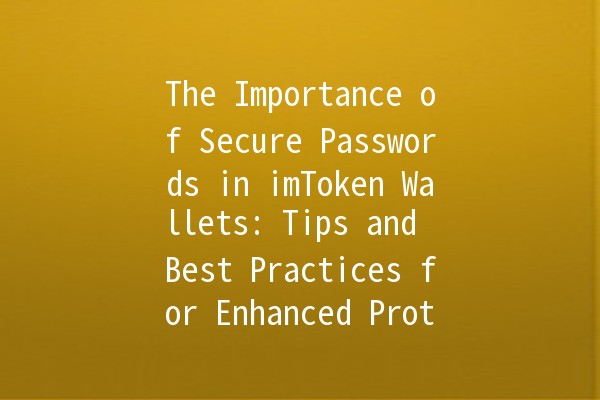In the everevolving sphere of digital finance, security remains a paramount concern for cryptocurrency holders. With the rising number of hacks and security breaches, understanding how to protect your assets is critical. The imToken wallet, a popular choice among crypto users, is no exception. This article will dive deep into the notion of secure passwords within the imToken wallet and offer practical strategies to enhance password security, effectively safeguarding your digital assets.
A password serves as the first line of defense for your digital assets. If compromised, unauthorized users can gain access, leading to potential loss of funds. Therefore, employing a strong password strategy is crucial. This ensures that your imToken wallet remains secure against various types of cyber attacks, such as phishing, brute force attacks, and keylogging.

By understanding these threats, users can better prepare and fortify their password defenses.
Description: Passwords should be at least 12 characters long and include a mix of uppercase letters, lowercase letters, numbers, and special characters.
Example: Instead of using a simple password like "Crypto123", create a complex password such as "C@r3ful$C0in2023".
Description: Enabling 2FA adds an additional layer of security beyond just your password. Even if your password is compromised, a second form of verification is required.
Example: Use an app like Google Authenticator or Authy to generate onetime codes for login. This way, even if someone retrieves your password, they still need the 2FA code to access your wallet.
Description: Change your password regularly to minimize the risk associated with prolonged usage of the same password.
Example: Set a reminder to update your password every three to six months. Ensure the new password is different from previous ones to maintain security.
Description: Do not include easily accessible personal information in your passwords, such as names, birthdays, or addresses.
Example: Instead of using "JohnDoe1990", use a random string of characters and replace some letters with symbols, like "J0hndoe!9*".
Description: Regularly check and manage devices connected to your wallet account. Log out from devices that you do not recognize or use anymore.
Example: By periodically reviewing connected sessions in your imToken wallet, you can identify unauthorized access and take necessary actions to secure your account.
Using a password manager can help store your passwords securely. This ensures you don’t have to remember complex passwords – just remember one master password.
Using the same password across multiple platforms increases the risk. If one service gets compromised, all accounts that share that password may also be at risk.
Understanding the latest phishing tactics and security threats empowers users to recognize suspicious activities. Regularly update yourself with security tips and strategies from trusted sources.
Keep an eye on your wallet’s transactions. Any unauthorized transaction should be reported immediately, potentially preventing further loss.
Create encrypted backups of your passwords in a secure location. This can be a flash drive or a secure cloud service that employs strong encryption protocols.
While mixing letters and numbers adds complexity, it is essential to include special characters and increase the password length for better security.
The frequency of password changes is essential, especially if you suspect any potential security breaches or after dealing with a phishing attempt.
With the use of password managers, users can generate and store strong passwords without the need to memorize them.
If you forget your password, use the wallet recovery features or reach out to imToken support for guidance. Always ensure you have access to backup phrases or recovery codes.
It is not advisable to use the same password for multiple wallets or accounts. Doing so increases the risk of losing all your assets if one account is compromised.
Never share your password with anyone, even if they claim to be customer support. Utilize secure communication methods to avoid interception.
Be wary of emails or messages requesting your password or personal information. Verify the sender's email and avoid clicking on suspicious links.
Absolutely. Changing your password immediately after a suspected breach is crucial. Additionally, enable 2FA if you haven’t already.
A password manager securely stores and encrypts your passwords, assists in creating complex passwords, and can autofill login forms for added convenience.
Implementing these strategies can strengthen your digital security posture significantly, allowing you to manage your cryptocurrency assets with greater peace of mind. By investing time in establishing a robust password security strategy, you reduce the potential risk associated with digital wallets, thereby enhancing your overall crypto experience.